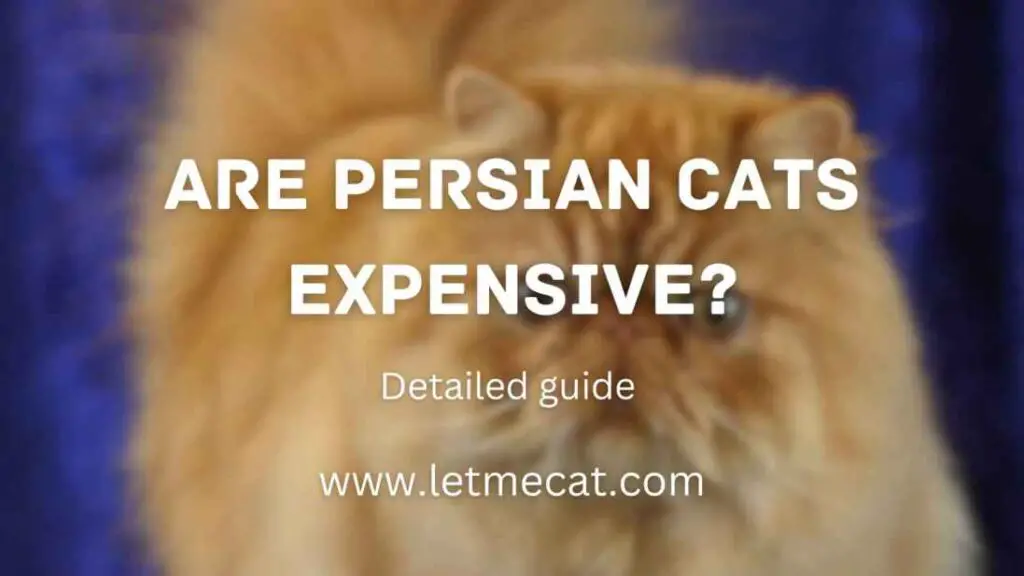In this article, we will explore the qualities of Persian cats and discuss whether they make good pets.
1. History of Persian Cats
Persian cats have a rich history that dates back to ancient times. They originated in Persia (modern-day Iran) and were highly valued for their luxurious coats. They were treasured by royalty and nobility throughout history, and their popularity spread to other parts of the world over time.
2. Physical Characteristics
Persian cats are known for their distinct physical features. Let’s delve into some of the key characteristics that make them unique.
2.1. Coat Type
One of the most remarkable traits of Persian cats is their long, silky coat. It requires regular grooming to prevent matting and keep it in pristine condition. Their coats come in various colors and patterns, adding to their visual appeal.
2.2. Facial Features
Persian cats have adorable round faces with expressive eyes and a flat noses. Their facial structure gives them a sweet and innocent expression that melts hearts.
2.3. Body Structure
These cats have a sturdy build with a medium to large size. Their short legs and broad chests give them an elegant posture, making them look regal and dignified.
3. Personality Traits
While the physical appearance of Persian cats is captivating, their personalities are equally endearing. Let’s explore some of the common traits exhibited by these feline companions.
3.1. Gentle and Calm
Persian cats have a reputation for being gentle and calm. They enjoy a peaceful and relaxed environment, making them an excellent choice for individuals seeking a serene and tranquil pet.
3.2. Independent
Despite their calm nature, Persian cats also possess a streak of independence. They appreciate their personal space and often find solace in quiet corners. This quality makes them suitable for individuals who respect their pet’s need for alone time.
3.3. Affectionate
Underneath their independent demeanor, Persian cats are affectionate beings. They form strong bonds with their owners and enjoy gentle cuddles and strokes. Their affectionate nature can bring comfort and warmth to any household.
4. Grooming Needs
The luxurious coat of Persian cats requires regular grooming to maintain its beauty. Their long hair is prone to tangling and matting, necessitating daily brushing to prevent discomfort and potential health issues.
Additionally, regular baths and periodic visits to professional groomers are essential to keep their coats healthy and free of knots.
5. Health Considerations
Like any other breed, Persian cats have certain health considerations that potential owners should be aware of. Due to their facial structure, they may be prone to respiratory problems and eye-related issues.
Regular veterinary check-ups are vital to monitor and address any potential health concerns.
6. Living Environment
Persian cats thrive in a calm and peaceful living environment. They prefer a quiet and secure home where they can relax undisturbed. Due to their low activity levels, they adapt well to apartment living.
However, it’s important to provide them with enough space to roam and explore.
It’s essential to create safe indoor spaces for Persian cats, as they are not as adventurous as some other breeds. They may not be as skilled at climbing or jumping, so providing sturdy and accessible furniture or cat trees can give them opportunities to engage in vertical exploration.
7. Interaction with Children and Other Pets
Persian cats are known for their gentle and patient nature, making them suitable companions for families with children. However, it’s crucial to teach children how to interact with cats properly and respect their boundaries. Supervision is necessary, especially with young children, to ensure the safety and well-being of both the cat and the child.
When it comes to other pets, Persian cats generally get along well with other animals, including dogs. Early socialization and proper introductions can help foster positive relationships between the Persian cat and existing pets in the household.
8. Training and Exercise
Persian cats are not as active or energetic as some other cat breeds. While they may not require intense exercise, it’s still important to provide mental stimulation and engage them in playtime activities. Interactive toys, puzzle feeders, and gentle play sessions can help keep them mentally and physically stimulated.
Training Persian cats can be a rewarding experience, as they are intelligent and eager to please. Using positive reinforcement techniques, such as treats and praise, can be effective in teaching them basic commands and behaviors.
9. Cost of Owning a Persian Cat
Owning a Persian cat comes with certain financial responsibilities. Considerations include initial adoption or purchase costs, regular veterinary check-ups, vaccinations, grooming supplies, high-quality Persian cat food, litter, and occasional grooming services.
It’s important to budget for these expenses to ensure the well-being and care of your Persian cat.
10. Where to Find Persian Cats
If you’re interested in bringing a Persian cat into your life, there are several options to consider. You can check local animal shelters or rescue organizations, as they may have Persian cats available for adoption.
Breed-specific rescue groups and reputable breeders are also avenues to explore when looking for a Persian cat that suits your preferences and lifestyle.
Conclusion
In conclusion, Persian cats make wonderful pets for individuals and families seeking a gentle, calm, and affectionate companion.
Their striking physical features, including their luxurious coats and adorable faces, add to their charm. While their grooming needs and potential health considerations require attention, the love and companionship they offer make it worthwhile.
By providing a suitable living environment, proper care, and plenty of affection, Persian cats can bring joy and happiness into your life.
We really appreciate your time that you have spent on reading this article.




Pingback: Are Persian Cats Deaf? The Hidden Truth - Let Me Cat